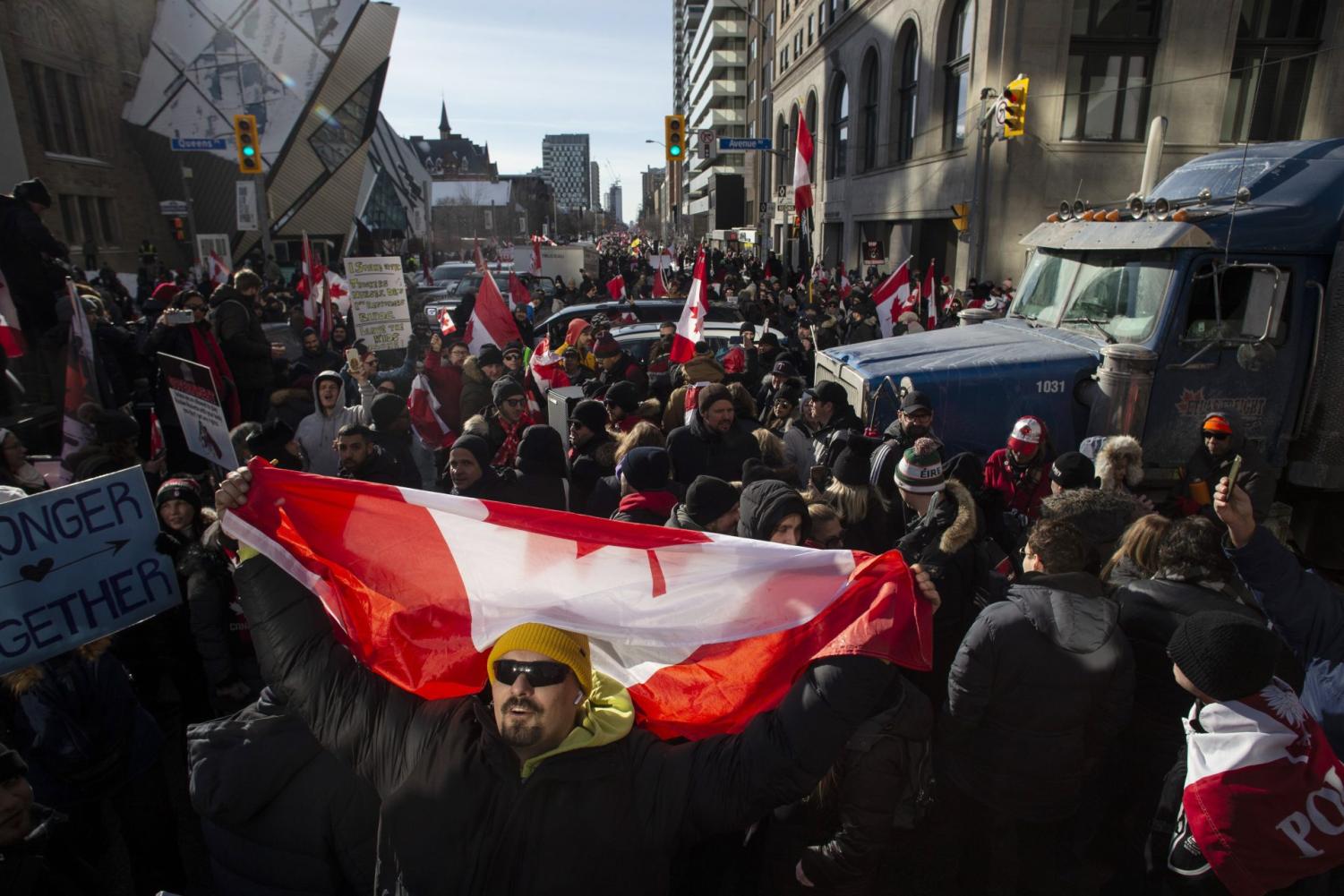
The Ambassador Bridge, located on the Michigan-Canada border, transports $360 million worth of U.S.-Canadian trade goods every single day. And from Feb. 7 to Feb. 13, the bridge was almost completely blockaded by protesters.
This blockade and protest were just one of many Canadian “Freedom Convoy” protests that have taken place over the last couple of months since the first protest began on Jan. 22. The protests are in response to the Covid-19 vaccine mandate for truckers crossing over the US-Canadian border.
In 2021, unvaccinated truckers were accommodated in hopes of avoiding any supply chain disruptions. But on Jan. 15 in Canada and Jan. 22 in the United States, these exemptions ended and cross-country truckers were told that they needed to get vaccinated to continue their work. By Jan. 28, the “Freedom Convoy” found themselves occupying various streets throughout Ottawa in protest of the new mandate.
As the movement spread across Canada, gaining truckers and non-truckers alike — their demands grew larger. The “Freedom Convoy” shifted from protesting vaccine mandates for cross-country truckers to protesting all vaccine mandates across Canada, including mask mandates and vaccine passports.
For a movement to truly grow, it needs funding, and the “Freedom Convoy” was no exception. In early February, Tamara Lich, a protest organizer, set up a GoFundMe page for the convoy and raised over 8 million Canadian dollars in the first week. This momentum worried manyCanadian officials, as protests in Ottawa continued to occupy streets, forcing the city to pay $800,000 a day for policing expenses.
These protests continued to add more problems to an already struggling Canadian supply chain. DePaul professor of operations management Nezih Altay talks about the importance of a supply chain during a pandemic.
“During a pandemic, it is not important — it is critical,” he said. “Whenever there is a health crisis in a country, the healthcare supply chain becomes critical. It should be priority number 1 for governments during such times. The idea is parallel to ‘how critical is the weapons and ammunition supply chain during a war?’”
The first roadblock the “Freedom Convoy” hit on Feb. 5 when their GoFundMe account was frozen after violating GoFundMe’s terms of service, and all 8 million Canadian dollars were refunded to the donors.
“This fundraiser is now in violation of our Terms of Service (Term 8, which prohibits the promotion of violence and harassment) and has been removed from the platform,” GoFundMe stated.
Four supporters of the convoy, operating under the name HonkHonkHodl, began a crypto fundraiser on the site Tallycoin. The fundraiser quickly accumulated $500,000 in bitcoin, but this was frozen by Canadian courts. On Feb. 17, Ottawa residents won a class-action lawsuit to freeze 146 cryptocurrency wallets tied to the organizers of the “Freedom Convoy” movement. This lawsuit is known as a Mareva Injunction and was the first in Canada’s history to freeze cryptocurrency.
The Canadian government also had another first during this time. On Feb. 14, Prime Minister Justin Trudeau invoked the Emergencies Act for the first time since it passed in 1988. The act gave Canadian police the ability to impose fines, arrest protestors and tow any vehicle blocking the road.
In Ottawa, the convoy continued their protest despite Trudeau’s invocation of the Emergency Act. In response, Ottawa police handed out fliers telling protesters they were to leave or be arrested, and on Feb. 17, officers arrested three of the convoy’s leaders: Tamara Lich, Chris Barber and Pat King. Over the next few days, Ottawa police arrested 191 protestors as they cleared the “Freedom Convoy” out of the capital. While the “Freedom Convoy” was out of Ottawa, it has since moved to more rural areas of Canada — and to the United States.
Over the past few weeks, copycat convoys such as “The People’s Convoy”, “American Freedom Convoy” and “Rolling Freedom” have since formed in protest against U.S. Covid-19 mandates. As of right now, most of these convoys have their sights set for Washington, D.C. However, Susan Burgess, senior professional lecturer and political science professor at DePaul, suggests the convoys may have difficulty gaining traction.
“[The] focus is now on, you know, the war in Europe,” she said. “And, for a lot of people, given the extreme violence and dislocation that’s happening there now, it’s going to be harder to make a strong popular argument that not wanting to mask is on a par with that.”
In preparation for Joe Biden’s State of the Union last Tuesday, Capitol Police set up fences and other guards in case any convoys decided to protest during the address. Ultimately, no convoy made an appearance at the event.
As Covid-19 cases continue to fall, so too do pandemic mandates. On Feb. 28, both Illinois and Chicago dropped their mask mandates. And on Feb. 25, DePaul University announced it would no longer require masking outside of classrooms and labs.
DePaul senior Caroline Sands noted she was “cautiously optimistic” from a health standpoint but is happy it might mean an end to some of these protests.
“As mask mandates are being lifted, I feel like we are going to be seeing a lot less of ‘Karens’ or anti-maskers because these people and their complaints are going to be less and less relevant,” she said.
"freedom" - Google News
March 07, 2022 at 12:15PM
https://ift.tt/CGt96vJ
How the “Freedom Convoy” took Canada, the US by storm - The Depaulia
"freedom" - Google News
https://ift.tt/UxqiM1z
https://ift.tt/MZfva9J
Bagikan Berita Ini















0 Response to "How the “Freedom Convoy” took Canada, the US by storm - The Depaulia"
Post a Comment